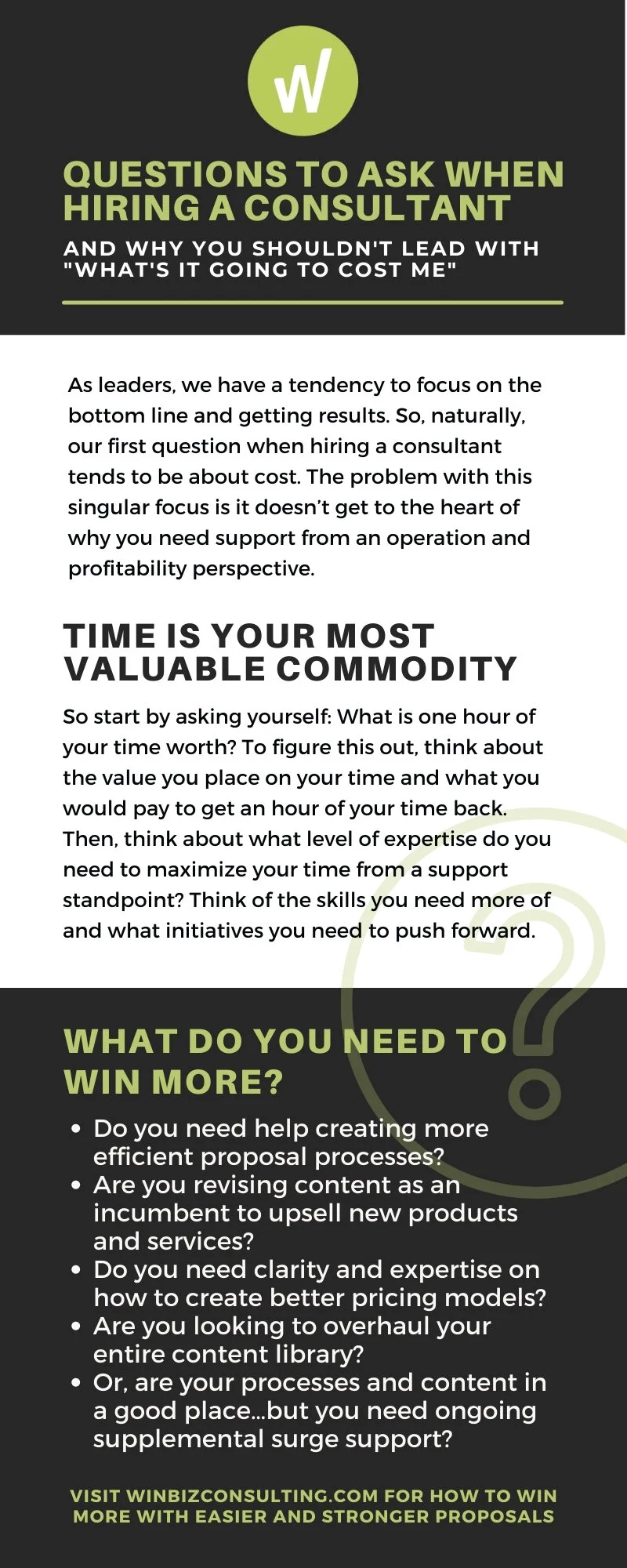Want To Win Your Next Bid? Use the Right Infrastructure
“Know your audience.”
If you were to ask me my best advice for aspiring communicators, that would be it. Whether you’re telling a joke, writing the next great American novel, or preparing a government proposal (which, let’s face it, feels like writing the next great American novel), you have to understand what your audience is looking for.
So take a moment to imagine the governmental body reviewing your next RFP response. What is that reviewer – or, more likely, panel of reviewers – looking for as they sift through dozens of proposals, some from organizations they’ve worked with, some from ones they’ve never heard of? Are they looking for a flashy proposal that “stands out?” Maybe one with a modern, trendy design?
Hardly.
I’d argue that as they’re going over the responses, they’re asking, “Can I trust this company to do what they say? Can I rely on them to meet the needs we laid out in the RFP?” They’re looking for a company they can count on, and if you want that company to be yours, your proposal needs to exude equal parts professionalism and capability.
So how can you do that? Beyond the thoroughness of the responses and quality of the writing, what can you do to reinforce that your organization is a professional, trustworthy provider?
For starters, use a template.
When reviewing your proposal, a governmental body will check that you submitted it on time (Late with the proposal? You’re saying deadlines aren’t important to you.) and answered all the questions (Miss a question? You’re careless, or maybe hiding something.).
But what if they see inconsistent formatting, irregular fonts and font sizes, or margins that vary from page to page? That proposal is actually saying Details don’t matter to me.
By using a template, your proposal’s presentation tells a different story:
That you are thorough: You reviewed the entire RFP and prepared a proposal that followed all appropriate formatting requirements.
That you are organized: A template lets you put all of your proposal content in the right place, where you’re able to tell your company’s story in a logical, coherent fashion.
That you sweat the details: All of the headers, footers, fonts, and document styles are pre-established. You don’t have to worry that exhibits are consistently formatted because it’s already taken care of.
It’s also important you use a template specifically built for RFPs. Every communication has a format that’s unique to them. Your TV commercial and TED talk might both be videos, but they’re not interchangeable: There are expectations surrounding each that make it unique.
So it is with proposal writing. Microsoft Word has built-in templates, or you can download some with fancy sidebars and colorful fonts, but a template specifically designed for RFPs can provide a format and layout that’s appropriate, professional, and in line with governmental board expectations. (Remember, this is the government we’re talking about: They’re looking for clean, simple, and stripped down for easy evaluations and comparison. They have neither the time nor tolerance for unique layouts and fonts or embedded videos and animations.)
Hopefully you see the value in using a template for your next RFP, especially one specifically created to meet the formatting and organizational requirements of government proposals. Even if you’re not yet ready to partner with WinBiz and start converting more bids to contracts, I invite you to email us at info@winbizproposals.com for a complimentary template designed for RFPs and to subscribe to our newsletter for tips and tricks to creating easier, stronger proposals.
Once you start creating organized, professional bids that consider what your audience is looking for, I think you’ll be pleasantly surprised with the results.
Preparing a response to a government procurement request or invitation is an important task, not necessarily a daunting one. It should be approached with diligence and professionalism. The U.S. Small Business Administration
Writing a successful proposal is about doing your homework, preparing and responding clearly and appropriately, aligning your proposal with the government’s needs and articulating what makes you the best solution provider. The U.S. Small Business Administration





